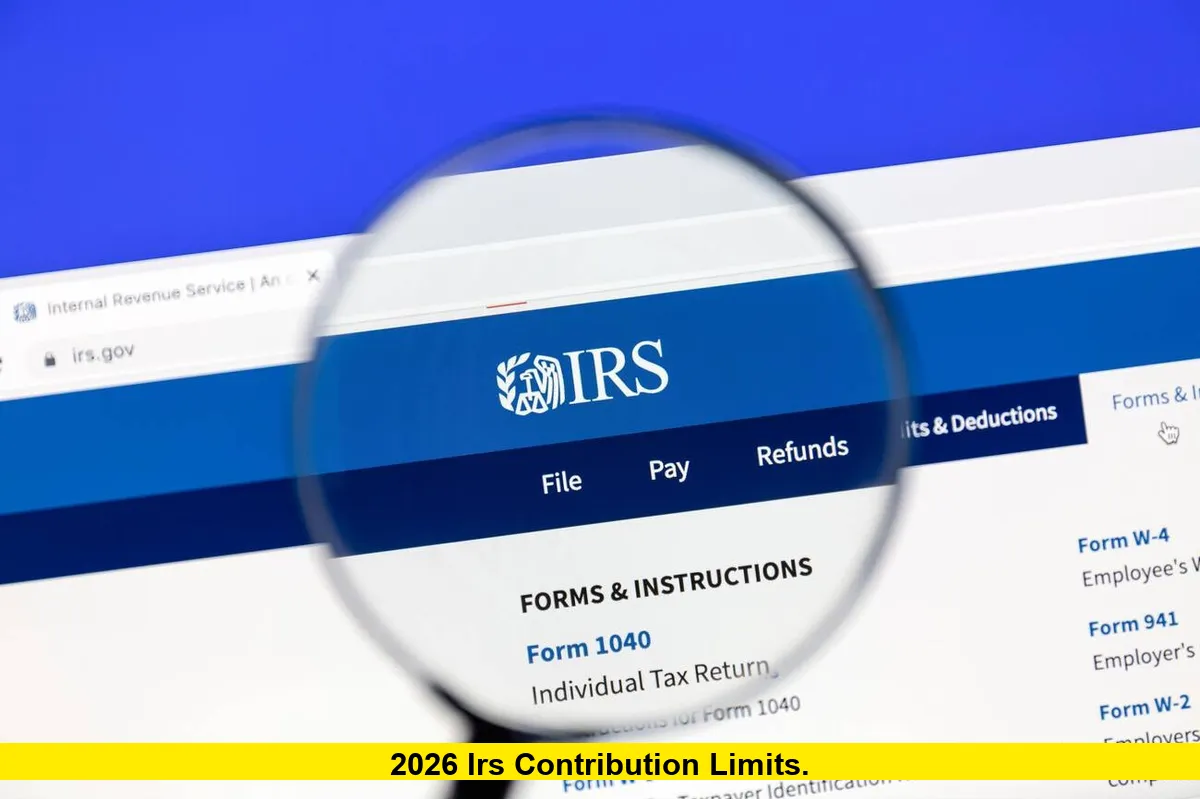The 2026 IRS contribution limits have begun to take shape, giving millions of Americans a clearer view of how much they can save in tax-advantaged accounts next year. While some limits—like those for Health Savings Accounts (HSAs)—are already confirmed, others such as 401(k) and IRA contribution caps are expected to see modest increases based on inflation trends.
Officially Announced: 2026 HSA Contribution Limits
The IRS has released the official 2026 limits for Health Savings Accounts (HSAs), reflecting inflation adjustments that help savers offset rising healthcare costs. Here’s what’s confirmed for 2026:
- Individual coverage: $4,400 (up from $4,300 in 2025)
- Family coverage: $8,750 (up from $8,550 in 2025)
- Catch-up contribution (age 55 and older): $1,000 (unchanged)
- Minimum annual deductible for a high-deductible health plan (HDHP): $1,700 for individual coverage and $3,400 for family coverage
- Maximum out-of-pocket expenses: $8,500 for individuals and $17,000 for families
These increases, while modest, can make a noticeable difference for individuals and families who use HSAs both as a tool for medical expenses and long-term investment growth. Because HSAs offer triple tax benefits—contributions are pre-tax, growth is tax-free, and withdrawals for qualified medical expenses are tax-free—they remain one of the most efficient ways to save for future healthcare costs.
Expected Increases: 401(k), 403(b), and 457(b) Plans
Although the IRS has not yet released the official 2026 contribution limits for retirement plans like 401(k), 403(b), and 457(b), projections indicate increases across all categories due to inflation indexing.
Here’s what experts anticipate for 2026 based on economic indicators:
- Employee elective deferral limit: expected to rise from $23,500 in 2025 to about $24,500 in 2026
- Catch-up contribution (age 50 and older): projected to increase from $7,500 to around $8,000
- Total contribution limit (employee + employer): likely to increase from $70,000 to approximately $72,000
These increases align with inflationary trends and allow workers to continue maximizing their retirement savings even as costs rise.
New Rule: Roth Catch-Up Requirement for High Earners
Beginning in 2026, higher-income earners—defined as those earning more than $145,000 in wages from a single employer in the previous year—will be required to make their catch-up contributions to workplace plans on a Roth (after-tax) basis.
This change stems from the SECURE 2.0 Act and will affect anyone aged 50 or older who exceeds the income threshold. It means these participants will pay taxes on their contributions up front, but withdrawals in retirement will be tax-free.
For individuals in higher tax brackets now, this rule could alter contribution strategies. It’s essential to check whether your employer-sponsored plan offers a Roth option, as you’ll need it to remain compliant in 2026.
Forecast for IRA and Roth IRA Contribution Limits
While the official numbers aren’t yet published, the traditional IRA and Roth IRA contribution limits are also expected to rise slightly.
Based on recent adjustments, here’s what 2026 could look like:
- IRA contribution limit: projected to increase from $7,000 to around $7,500
- Catch-up contribution (age 50 and older): expected to stay at $1,000
These accounts remain vital tools for retirement savers who either don’t have access to a workplace plan or want to supplement their 401(k) savings.
Other Adjustments to Expect in 2026
In addition to retirement and health accounts, several other IRS-regulated limits typically rise each year to match inflation. Here are a few expected updates for 2026:
- Flexible Spending Accounts (FSAs): Projected increase to around $3,300 for healthcare FSAs.
- Dependent Care FSAs: Expected to remain capped at $5,000 per household.
- Commuter (parking and transit) benefits: Likely to increase to approximately $340 per month.
Each of these changes reflects the IRS’s annual inflation adjustments to preserve the real value of tax-advantaged savings.
Summary: 2026 IRS Contribution Limits Snapshot
| Account Type | 2025 Limit | 2026 Limit (Official/Expected) | Notes |
|---|---|---|---|
| 401(k)/403(b)/457(b) Employee Contribution | $23,500 | ~$24,500 | Official numbers pending |
| Catch-Up Contribution (Age 50+) | $7,500 | ~$8,000 | High earners must use Roth option |
| Total Contribution Limit | $70,000 | ~$72,000 | Employee + employer |
| Traditional/Roth IRA | $7,000 | ~$7,500 | Expected |
| IRA Catch-Up (50+) | $1,000 | $1,000 | No change expected |
| HSA – Individual | $4,300 | $4,400 | Confirmed |
| HSA – Family | $8,550 | $8,750 | Confirmed |
| HSA Catch-Up (55+) | $1,000 | $1,000 | No change |
| FSA (Health) | $3,200 | ~$3,300 | Expected |
| Commuter Benefits | $315 | ~$340 | Expected |
How to Prepare for 2026
- Review your employer’s retirement plan now.
Check whether it supports Roth catch-up contributions, as this will become mandatory for certain earners in 2026. - Plan ahead for contribution increases.
Adjust your payroll deferrals and automatic transfers early in the year to take advantage of the higher limits. - Maximize your HSA.
If eligible, consider contributing the full amount—HSAs remain a powerful long-term savings tool for both healthcare and retirement. - Track official IRS announcements.
The final retirement contribution limits are typically released in late October or early November each year. - Revisit your investment mix.
With contribution limits rising, ensure your asset allocation still matches your risk tolerance and time horizon.
The 2026 IRS contribution limits bring another round of opportunities for Americans to boost their savings while staying ahead of inflation. From HSAs to 401(k)s, these incremental increases can make a significant difference over time—especially for those who plan early and contribute consistently.
Stay informed, plan smartly, and take full advantage of every dollar you’re allowed to save under the new IRS guidelines.
